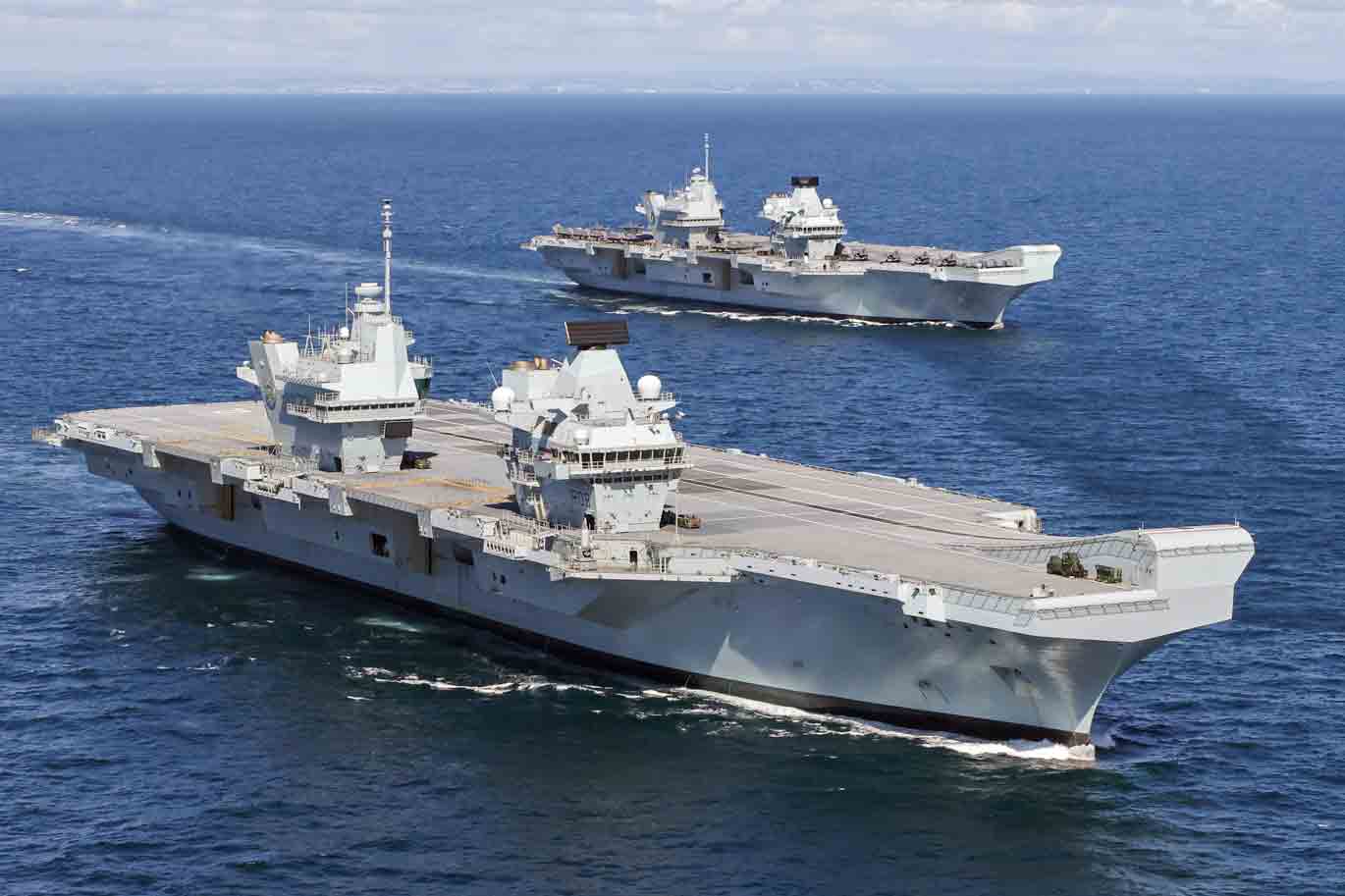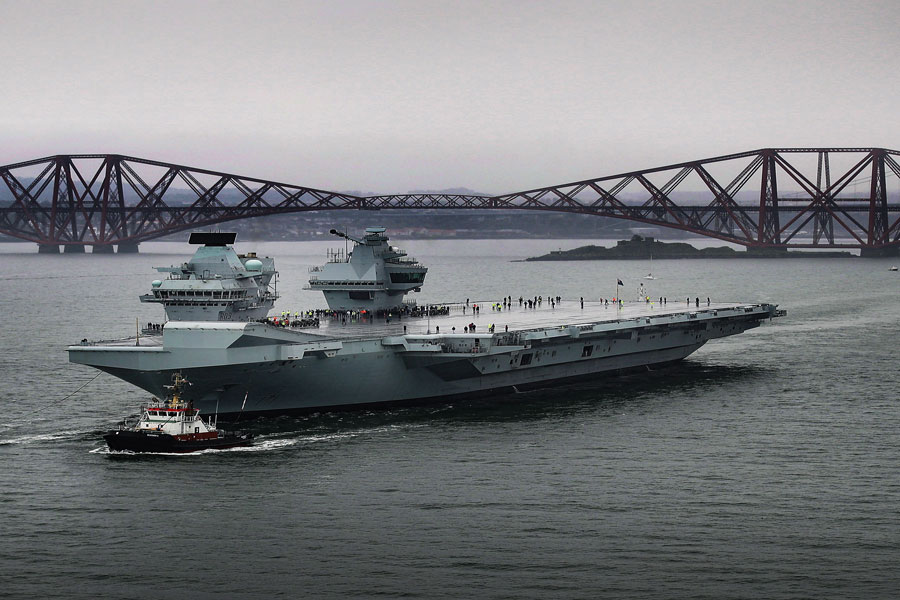Royal Navy says recent Steadfast Defender exercise vindicates the need for two aircraft carriers
"If you want a continuous, carrier-enabled strike, two ships are the answer. NATO's Steadfast Defender proves it," says HMS Prince of Wales' Captain.
Lee Willett
27 March 2024

As the largest and most expensive warships ever constructed in the UK, the Ministry of Defence’s procurement of two Queen Elizabeth-class (QEC) aircraft carriers has generated much discussion over their cost relative to their value.
The £6.2bn price tag for both carriers, plus some technical failures the two ships have suffered, have prompted some sceptics to question their value for money. However, for the navy, the strategic and operational value in procuring two carriers and having both ships crewed and operational has been demonstrated clearly in the first few years of QEC class operational service. This was demonstrated recently in the deployment of HMS Prince of Wales to the recent Steadfast Defender exercise, the largest NATO military exercise since the Cold War.
Between mid-February and mid-March, second-in-class QEC carrier Prince of Wales participated in Steadfast Defender as flagship, commanding various task groups as the exercise moved from the North Sea to northern Norway.
HMS Prince of Wales took over this task from sister ship HMS Queen Elizabeth, following identification in early February of an issue with Queen Elizabeth’s starboard propeller shaft coupling as the lead QEC carrier prepared to sail for the exercise. The carrier had to be returned to Rosyth dockyard, where it was originally assembled, for repairs. Prince of Wales – at the time at 30 days’ notice to sail – was ready to deploy within eight days.
Back in 2022, HMS Prince of Wales suffered a starboard propeller shaft coupling issue, which was identified as the ship sailed from Portsmouth for its Westlant 22 deployment to the US eastern seaboard.
On that occasion, it was HMS Queen Elizabeth’s turn to hand over at the helm, picking up the Westlant tasking between September and December 2022, before proceeding (as planned) to be the UK’s very high readiness strike carrier. Operating two carriers is designed to underpin the availability of one ship to undertake this very high readiness strike carrier role, providing strategic-level conventional deterrence and defence for the UK by generating a continuously available carrier strike capability.
For the Royal Navy, the decision to procure two QEC aircraft carriers and to invest in the operational availability of both ships, rather than just one, has been borne out.
“The whole point is we have a continuous capability,” Captain Will Blackett, Prince of Wales’ commanding officer, told Defence Procurement International during an interview onboard the carrier, while the ship was conducting the Joint Warrior phase of Steadfast Defender in the North Sea.
“Two carriers equal one carrier strike group (CSG),” says Capt Blackett. “In extremis, it equals two carriers at sea – but the point is, if you want a continuous, carrier-enabled strike, two ships are the answer. What we’ve just been through proves it.”
Switching the two ships over underlined the redundancy inherent in the carrier programme, alongside the navy’s wider focus on improving readiness and availability across the fleet.
“The whole handover was about mindset, momentum, and people …. The great thing about carriers is they’ve got huge numbers of people, and lots of spare capacity,” says Capt Blackett. “By operating two carriers routinely and maintaining one whilst we work the other, we always have the option to sail the other ship as long as the people that do it have got the right experience and the right qualifications.”
“The beauty is, of course, if you develop a problem in one then the other one can step up. So, you manage the gaps,” he added.
Steadfast Defender was designed to demonstrate NATO’s ability to deploy reinforcements from north America, across the Atlantic Ocean, and into northern Europe and the high north, in the event of a North Atlantic Treaty Article-5-level threat to the security of an alliance member state or the alliance as a whole.
The two-phase exercise saw reinforcements delivered into northern Europe and high north regions, before being deployed ashore. The HMS Prince of Wales CSG and NATO’s standing naval forces provided at-sea security for the reinforcement activity. Prince of Wales then conducted carrier strike operations in support of ground forces going ashore.
Dr Lee Willett is an independent writer on naval, maritime, and wider defence and security issues. He previously ran the naval/maritime desks at the Royal United Services Institute (RUSI) and Janes.
RELATED ARTICLES
Courting Controversy: The Royal Navy's £6.2 billion Aircraft Carriers
